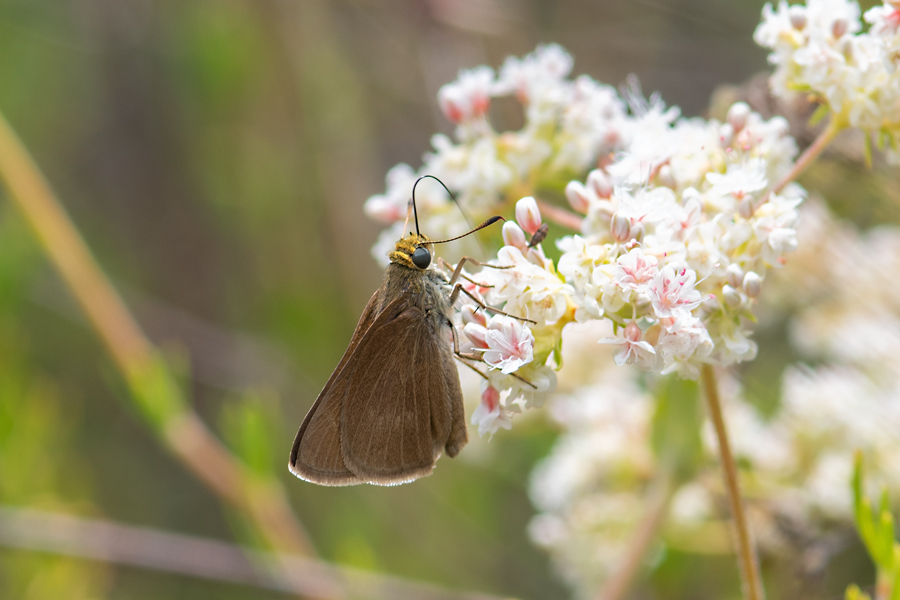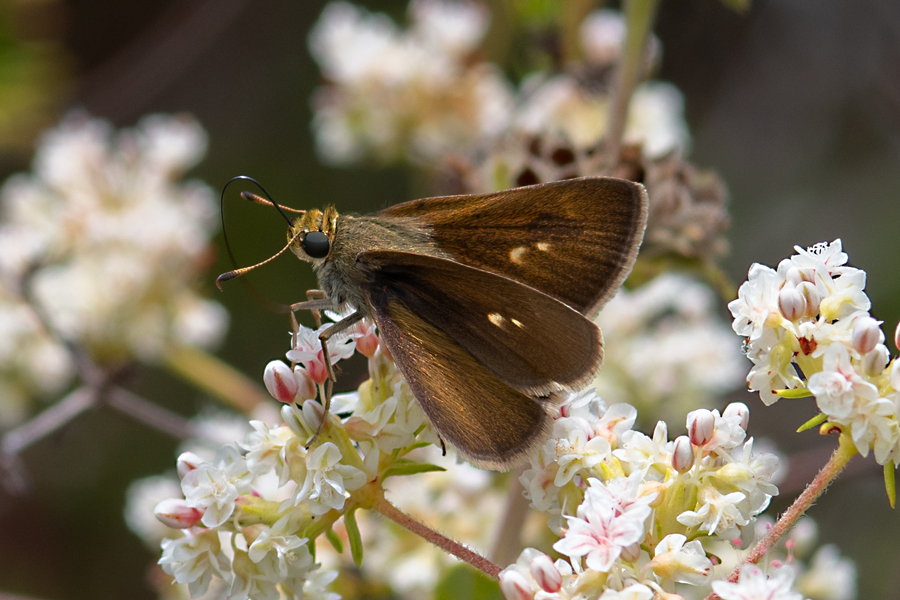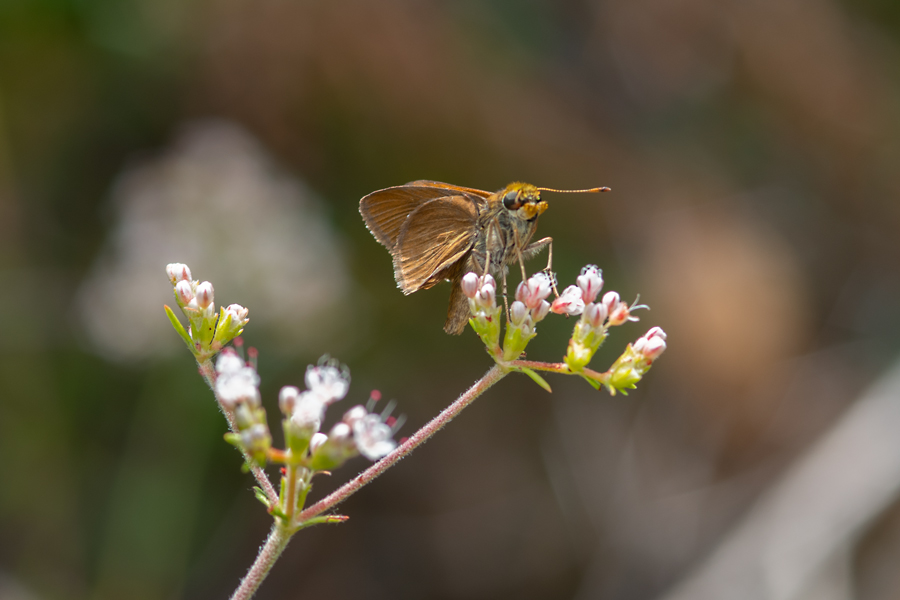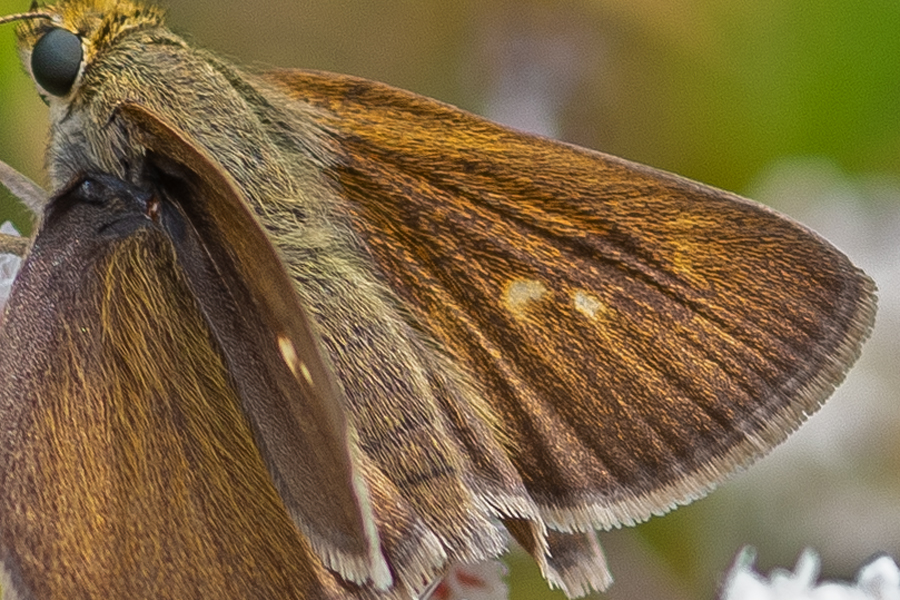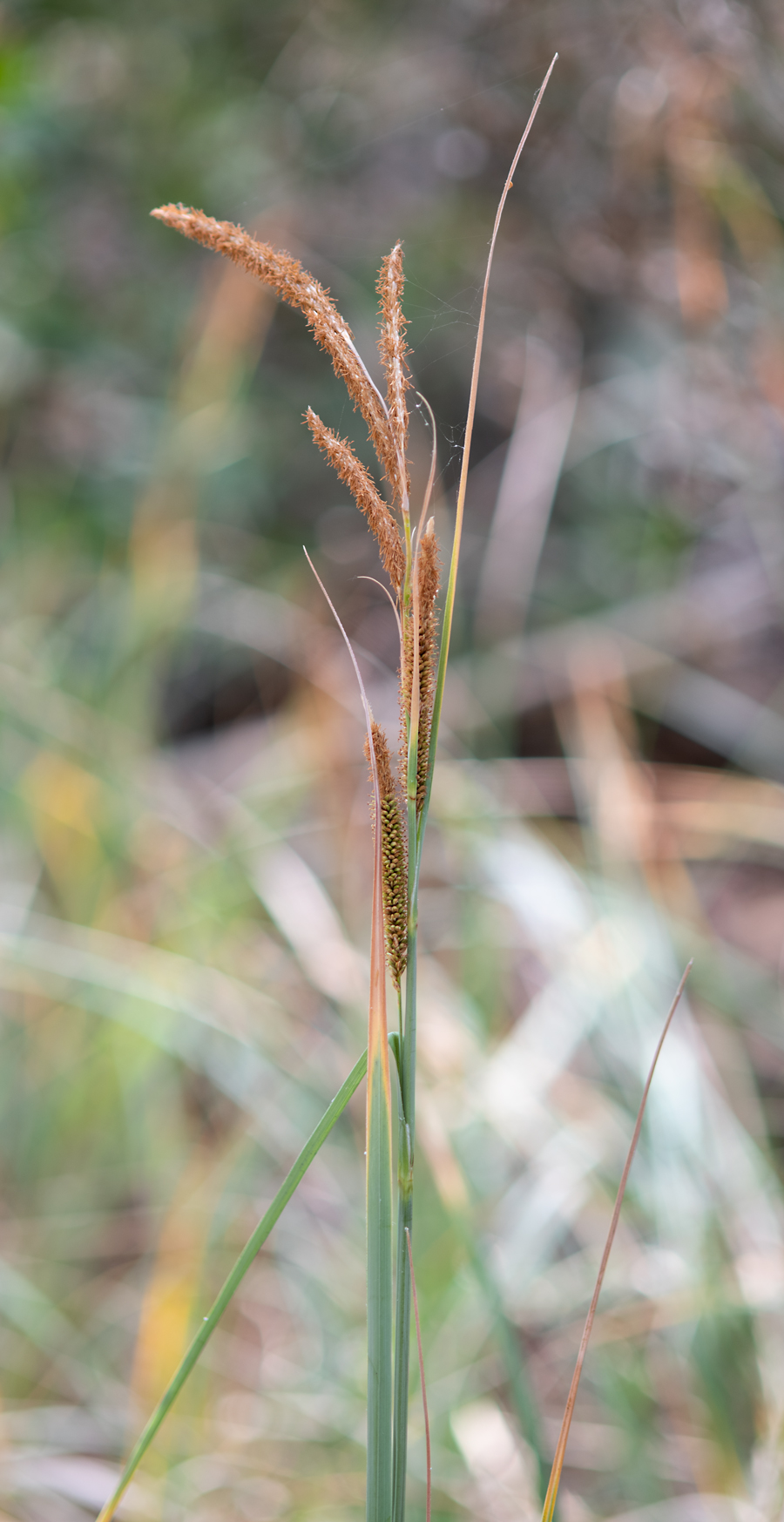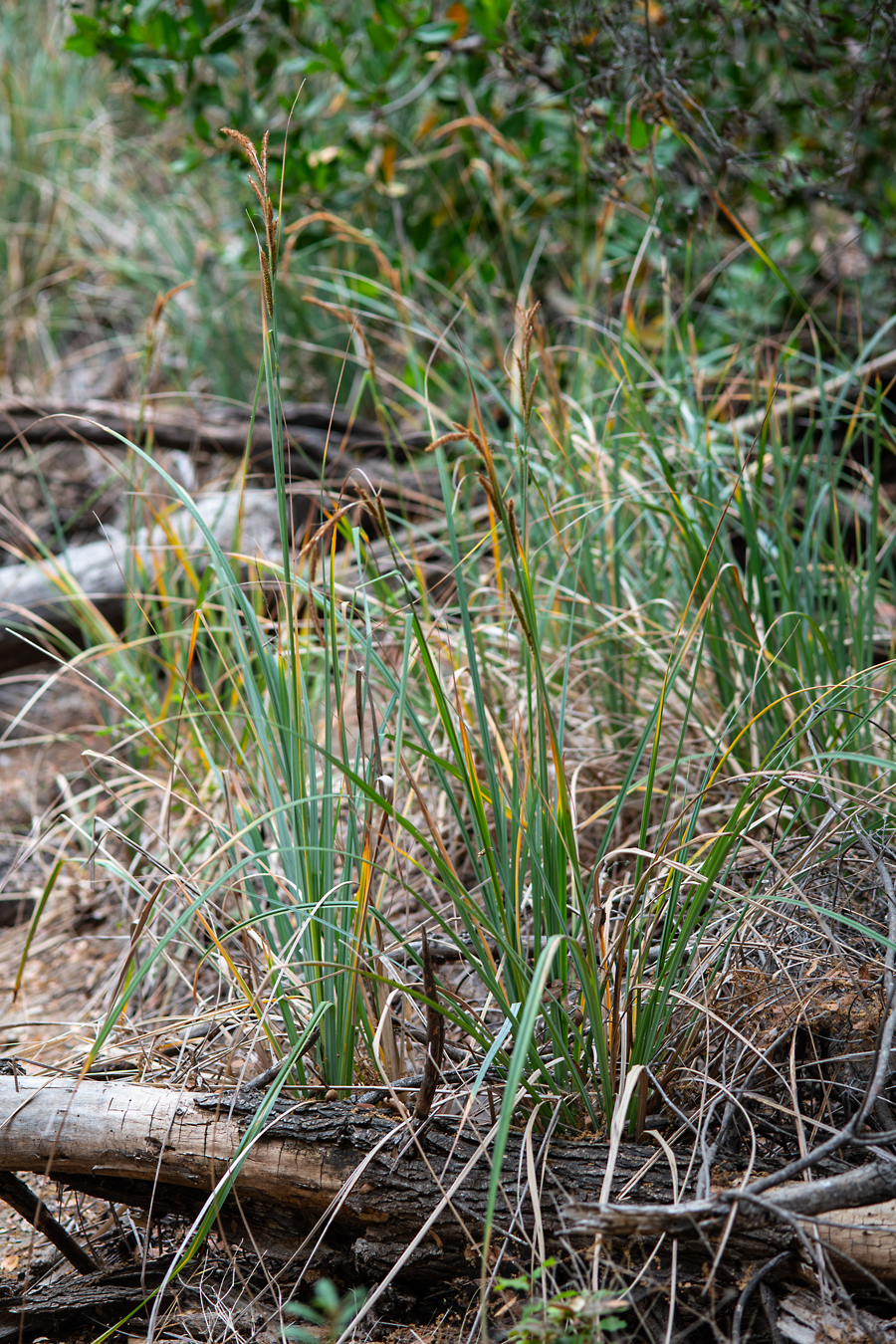Euphyes vestris harbisoni
Harbison's Dun Skipper
Euphyes vestris harbisoni is a rare skipper with a subtle beauty that is best known from San Diego County, but it also gets into Orange County and Mexico to some extent. It uses the sedge Carex spissa as the larval host plant and flies from late May through early July most years. The flight season is said to be four to six weeks for a given colony. The sedge seems to do well in the shade of oak trees at drainage crossings, so these are the places to look. But expect to find few of these skippers even at a known site; I was happy to find two when I photographed those below.
Survey work done beginning in 2013 tracked down several extant colonies. See Daniel Marschalek and Douglas Deutschman, "Initial Investigation of Critical Biological Uncertainties for Harbison’s dun skipper (Euphyes vestris harbisoni) on Conserved Lands in San Diego County," 2015 (accessed as pdf in 2021). This paper was invaluable for me and I am very grateful to the authors. They describe the life-cycle: Harbison's dun skipper oviposits on the underside of the grass blades, and early on, larvae feed at the base of the plant. They later (2nd-3rd instar) use grass blades to form a shelter (or "hibernaculum") for when they are not feeding, and in which they overwinter as third or fourth instars. The green larvae resume feeding in the spring, and pupation (also in the shelter) lasts 18 to 21 days.
